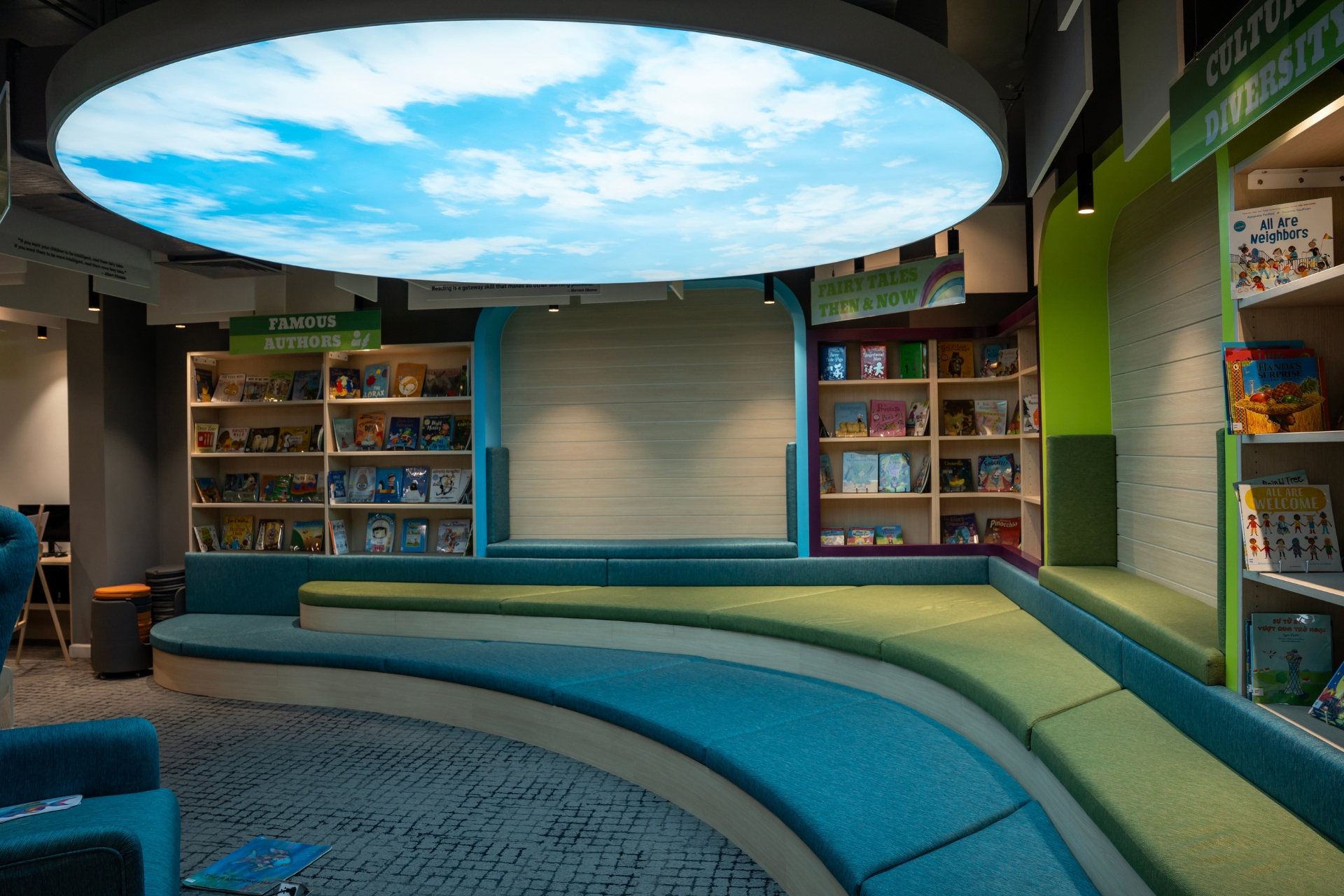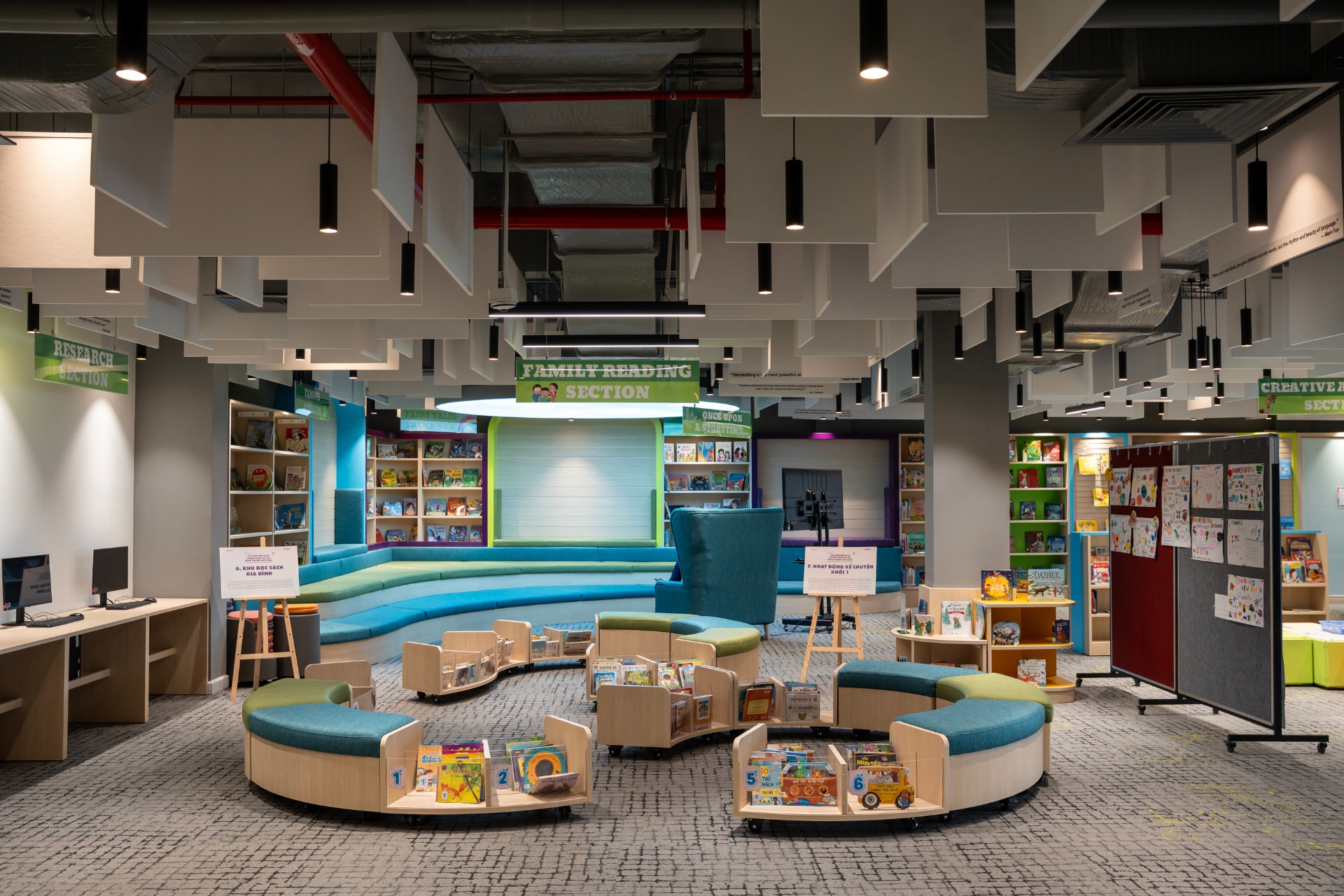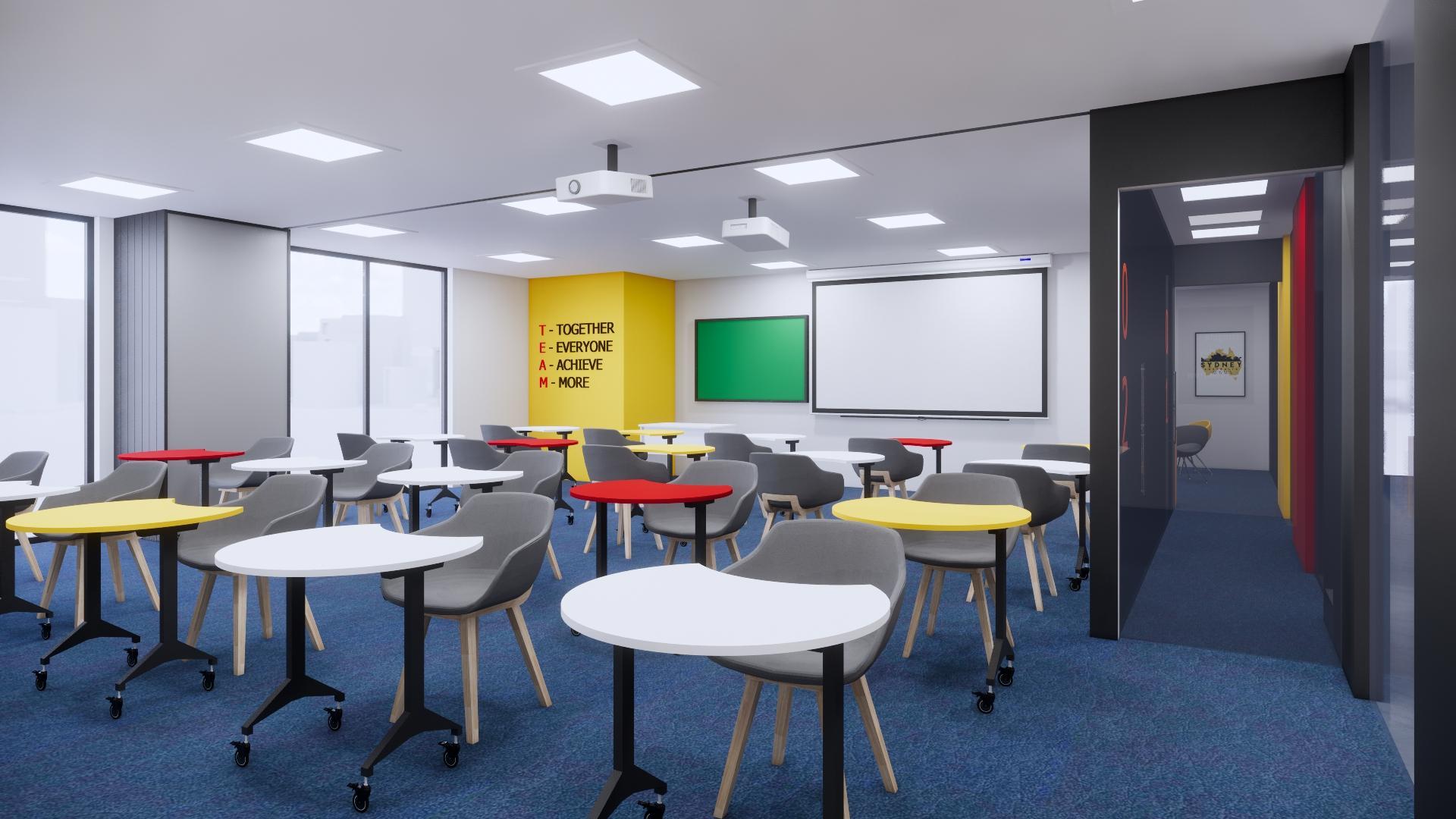
Important factors in school interior design
A well-designed space not only enhances focus and creativity but also supports the teaching process and the comprehensive development of students. Achieving this requires considering multiple standards. In this article, TECO explores the core factors and key considerations that contribute to optimal school interior design, ensuring it meets practical needs.
Standards for Lighting, Color, and Safety in School Interior Design
When designing school interiors, several essential factors must be considered to create an effective learning environment that stimulates students’ creativity. Among these, lighting, color schemes, and safety standards play a crucial role in shaping the school’s interior.
Lighting Standards
Lighting is a key element in learning environments, directly impacting students’ concentration, academic performance, and visual health.
Classrooms should incorporate natural light effectively. Windows should occupy 20-30% of the wall area to ensure sufficient illumination without excessive glare. The direction of incoming light should be carefully considered to prevent direct exposure on blackboards or student desks, reducing eye strain. Adjustable blinds can help regulate brightness when necessary.
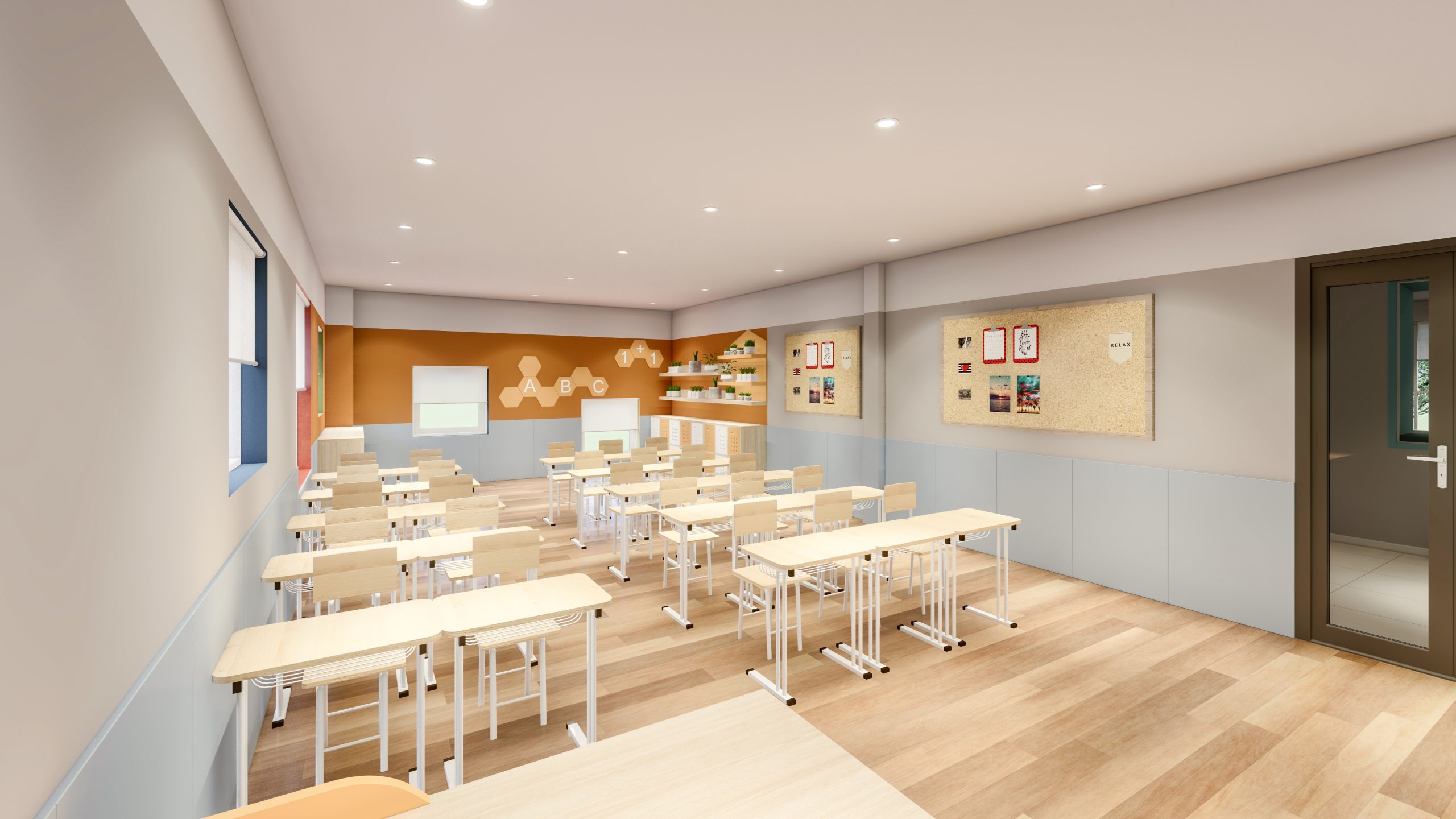
Maximizing natural lighting for classroom.
In addition to natural light, artificial lighting must be integrated to ensure adequate illumination. According to Vietnamese Standard TCVN 7114-2008, a properly lit classroom should maintain an illuminance level of 300-500 lux. A neutral white light temperature (4000-5000K) is recommended for a comfortable ambiance that enhances concentration. Lights should be arranged parallel to the students’ line of sight and directed from the ceiling downward to minimize glare and reflections.
Color Standards
Colors play a significant role in aesthetics and influence students’ psychology, concentration, and creativity.
Each color carries a different meaning, and selecting the right shades depends on functional areas, structural elements, and interior furnishings. Here are some fundamental color principles:
- Walls and Ceilings: Light, neutral colors such as white, cream, pale blue, and light yellow create a comfortable atmosphere.
- Desks and Chairs: Moderate contrast between furniture and background colors prevents visual strain.
- Functional Areas:
- Classrooms: Neutral tones promote calmness and concentration.
- Libraries: Blue hues foster a quiet, focused ambiance.
- Play Areas: Bright colors like orange, red, and yellow stimulate creativity and energy.
Applying color psychology in school design ensures a balanced environment. Overly bright colors may overstimulate students, reducing their ability to focus, while dark tones may create a heavy, somber mood. A well-balanced mix of brand colors, neutral shades, and accent hues is essential to achieving an optimal learning space.
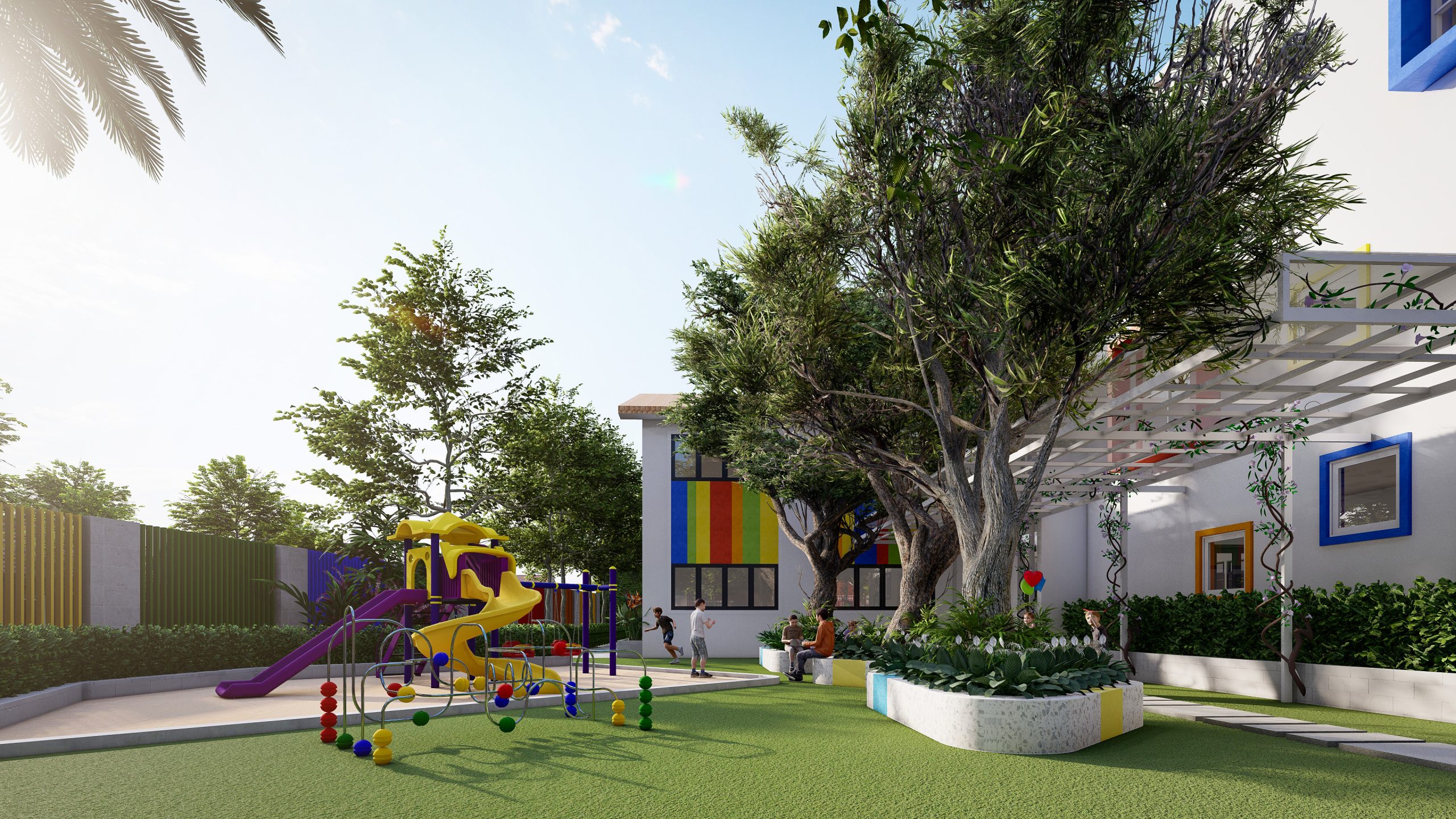
Utilizing bright colors for playground in school.
Safety Standards
Ensuring safety in school interior design is critical to protecting students from potential hazards. Below are three essential safety solutions:
- Safe Materials: Use non-toxic materials for walls, flooring, and furniture. Paints and finishes should be lead-free, and materials such as composite wood and plastic must meet fire resistance standards. Slip-resistant flooring is recommended to prevent accidents.
- Safe Design: Desks and chairs should have rounded edges to minimize injuries from collisions. Electrical outlets should be placed safely: For preschool and primary school classrooms, outlets should be installed at least 1.5 meters above the floor to prevent access by young children. For secondary schools and other areas, outlets should be positioned at least 0.3 meters above the ground to avoid exposure to water and dust.
- Emergency Exits: Clearly visible emergency exit signs are essential. Schools must have a proper fire alarm and suppression system in place. Hallways should be wide and free of obstacles to ensure safe evacuation in emergencies.
Key Considerations for School Furniture
Desks and Chairs
The arrangement of desks and chairs must align with students’ age groups and grade levels, ensuring sufficient movement space and encouraging interaction. For preschoolers, furniture should be compact and colorful, while high school students require standardized desks and chairs that promote proper posture. Additionally, the placement of desks should optimize natural light exposure and ensure an unobstructed view of the board. High durability, aesthetic appeal, and ease of mobility are also essential factors to consider when selecting school furniture. A well-planned seating arrangement contributes to an ideal learning environment that fosters students’ overall development.
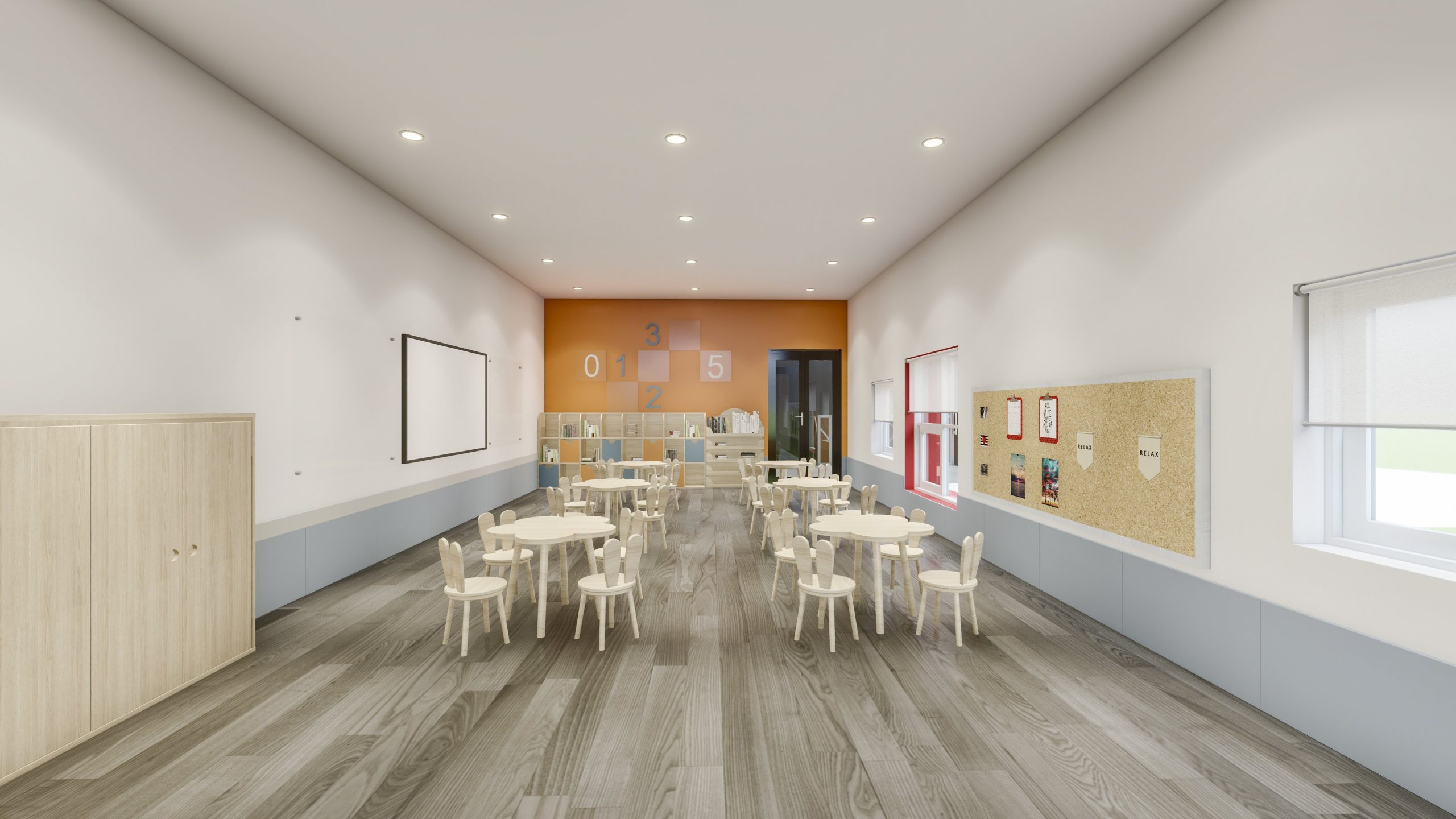
Desks and chairs should be suitable for each age group and grade level.
Classroom Boards
As the focal point of any classroom, the placement and design of boards require special attention. The ideal position is at the front of the room, ensuring clear visibility for all students without glare or obstructions. Board dimensions should correspond to the classroom size, allowing teachers to present information effectively. Many schools prefer whiteboards due to their practicality, ease of maintenance, longevity, and cost-effectiveness.

Board is put in the center of each classroom.
Functional Room Equipment
Functional rooms play a vital role in supporting specialized educational activities. Each space must be equipped with suitable furnishings to meet specific requirements. The selection and arrangement of equipment should adhere to scientific, safety, and aesthetic principles, aligning with the intended purpose of each room to enhance the overall educational experience.
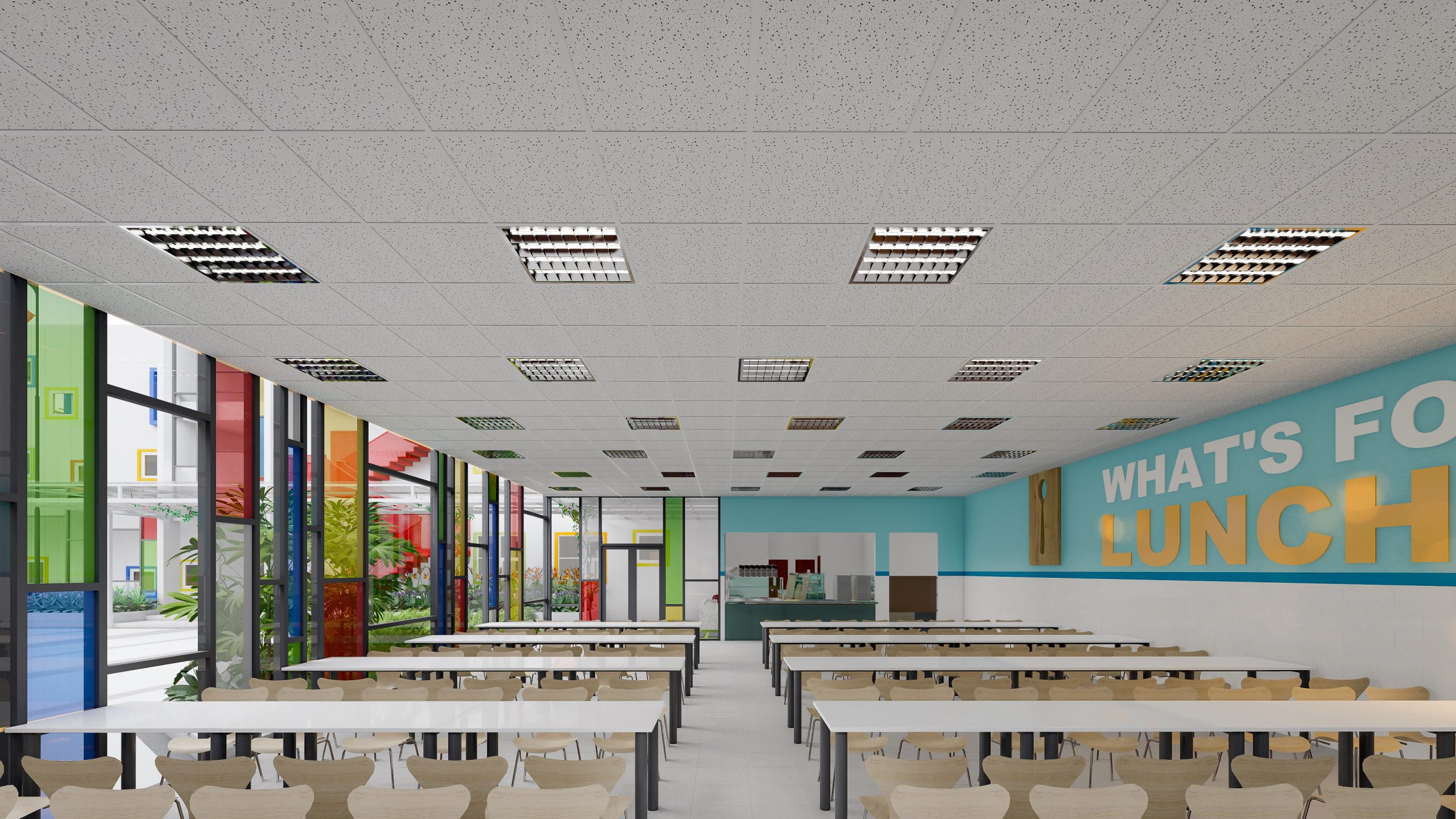
School canteens should feature open, well-ventilated layouts.
Conclusion
TECO hopes this article has provided valuable insights into the standards for lighting, color selection, and safety in school interior design. When these factors are optimized, students can enjoy the best conditions for intellectual and physical growth. Investing in school interior design is an investment in the future, enhancing educational quality and laying a solid foundation for the next generation. Stay connected with TECO for more knowledge and expertise in school design and construction!


